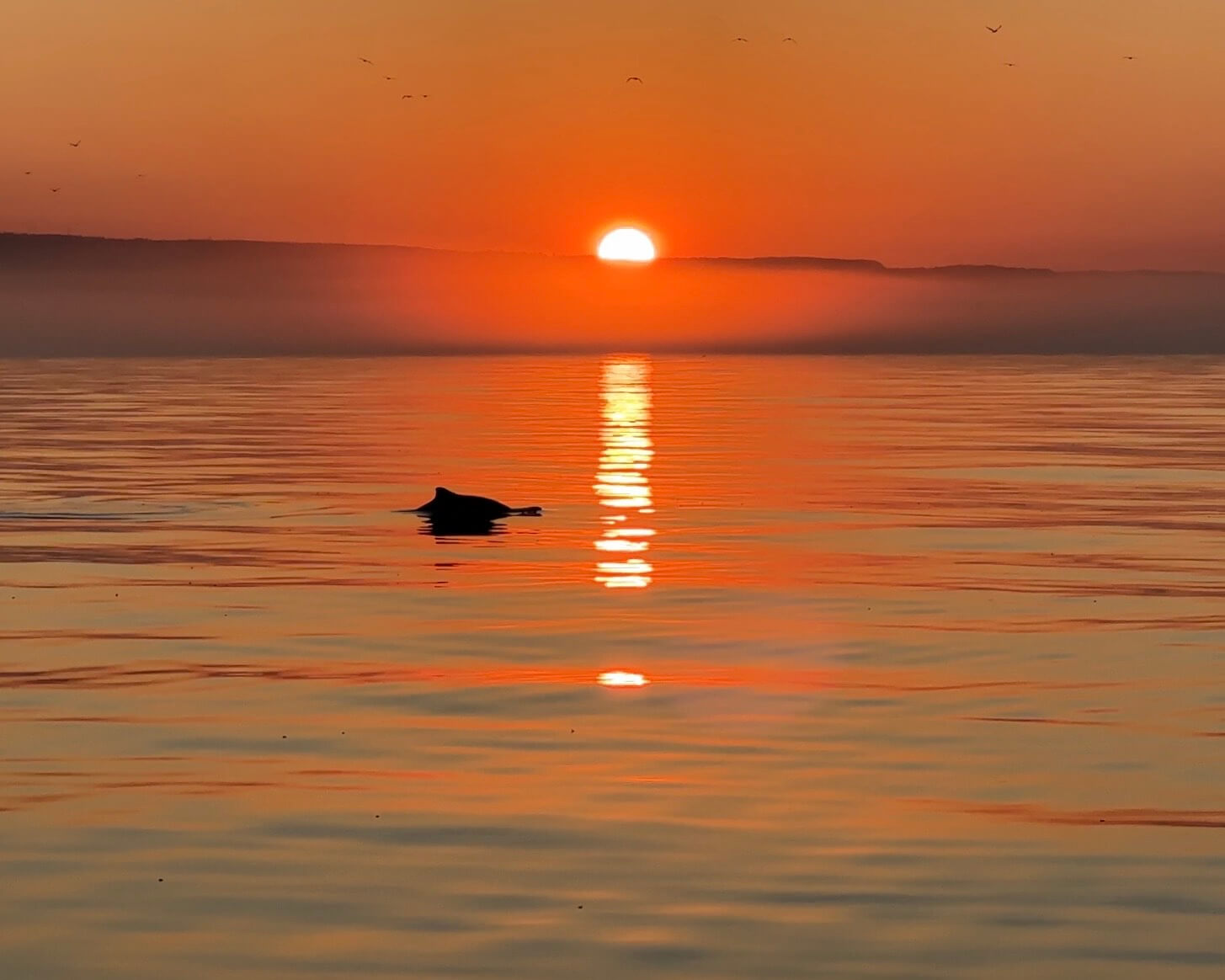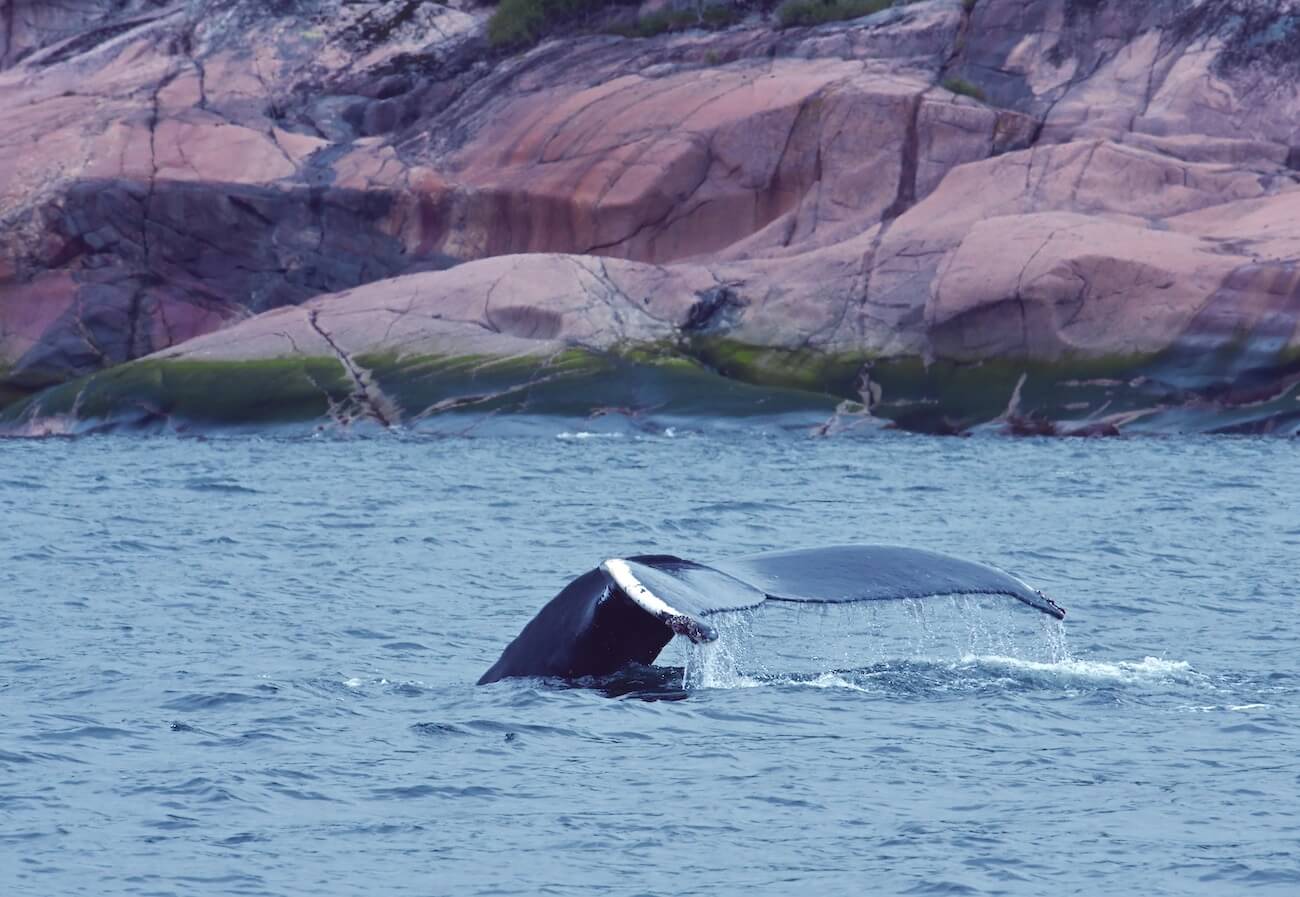In terms of marine mammal sightings, the week can be summed up by harp seals at several locations in the St. Lawrence and a lone fin whale near Franquelin.
A resident of this village happened to spot a fin whale on his way to work: “It was very close to shore!” A brief time-out that certainly brightened up his day! Swift, flexible and powerful, fin whales are always impressive to watch. Indeed, this is the fastest of the large cetaceans; after all, it is not nicknamed “greyhound of the seas” for nothing! At the surface, breathing sequences can comprise 5 to 10 exhalations. It doesn’t generally show its tail when it dives, the flexion movement of its supple body being sufficient to nosedive to the ocean depths.
Seven days ago, an observer tallied around fifty harp seals on the ice in Gaspé Bay; she could see them from Haldimand Beach. Last Monday, during a stroll on the same beach, there were still around twenty seals at this location. From the North Shore, a few groups of harp seals were reported here and there. One seasoned observer who spends time by the river every day crosses his fingers for the arrival of minke whales. “With so little ice in the estuary, perhaps we will see some as early as next week?” he predicts. You just never know!
Seal mobility
Agile and graceful in the water, seals seem to lose a little bit of their finesse once on dry land. It is even said that their movement recalls that of a clumsy caterpillar… First, they shift their weight toward their chest while thrusting their pelvis forward, after which they shift their weight back to the pelvis while stretching out the front of their body. During this time, the front flippers serve as support while the rear ones drag across the ground. Conversely, in the water, it is their powerful hind flippers that they use to propel themselves. To transition from one element to another, they use their long claws to grip the rocks or ice.
Thanks to all our collaborators!
Special thanks go out to all our observers who share their love for marine mammals with us! Your encounters with cetaceans and pinnipeds are always a pleasure to read and discover.
On the water or from shore, it is your eyes that give life to this column.
Laetitia Desbordes
Robert Michaud
Diane Ostiguy
Renaud Pintiaux
Pascal Pitre
Andréanne Sylvain
Marielle Vanasse
And all those we left out!
Additionally, we would like to acknowledge the following teams that also share their sightings:
Mingan Island Cetacean Study (MICS)
Marine Mammal Observation Network (ROMM)
Quebec Marine Mammal Emergency Response Network (QMMERN)
Group for Research and Education on Marine Mammals (GREMM)
Would you also like to share your observations?
Have you seen any marine mammals in the St. Lawrence? Whether it’s a spout offshore or just a couple of seals, drop us a line and send your photos to [email protected]!






